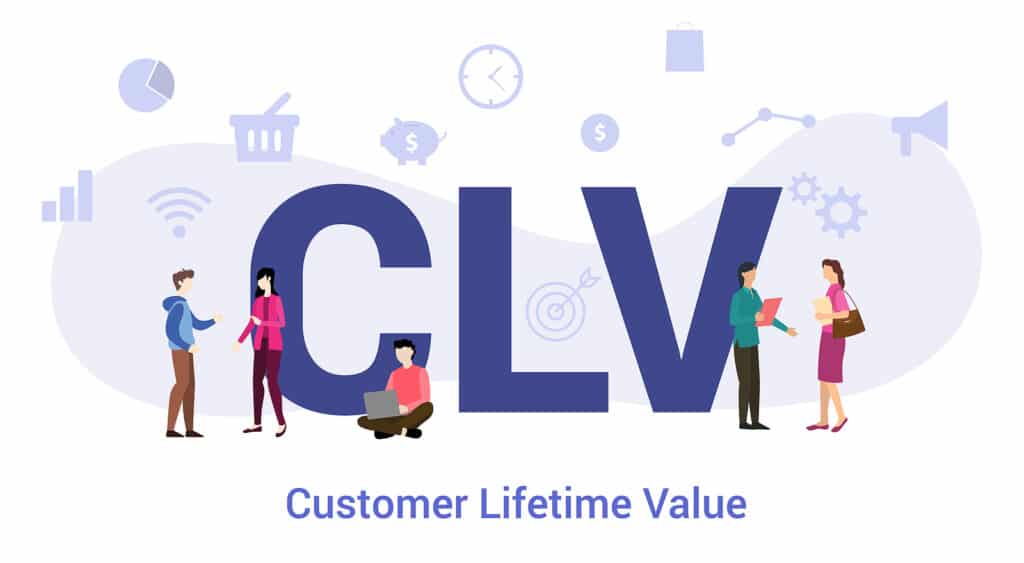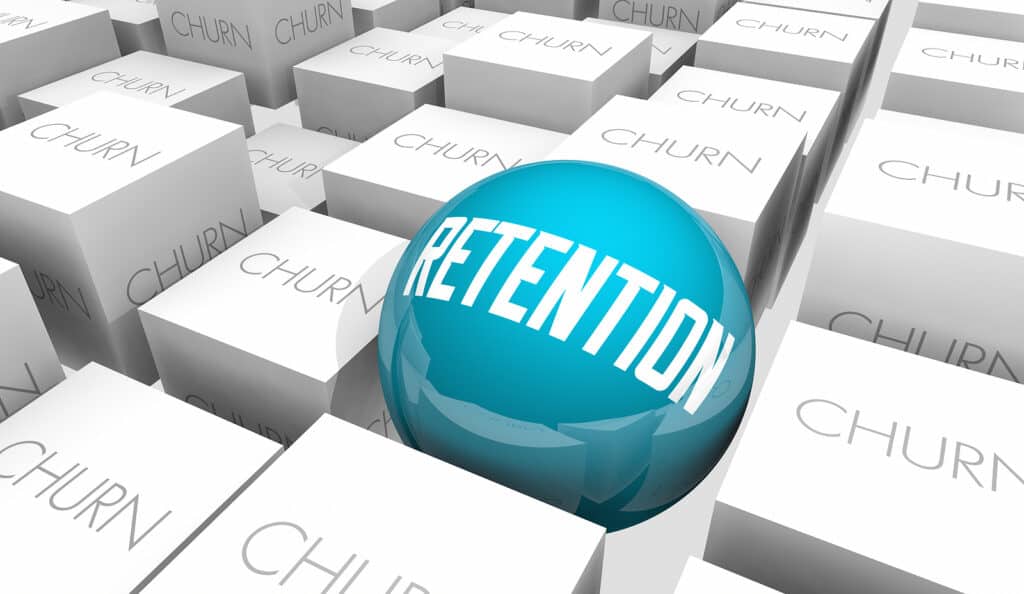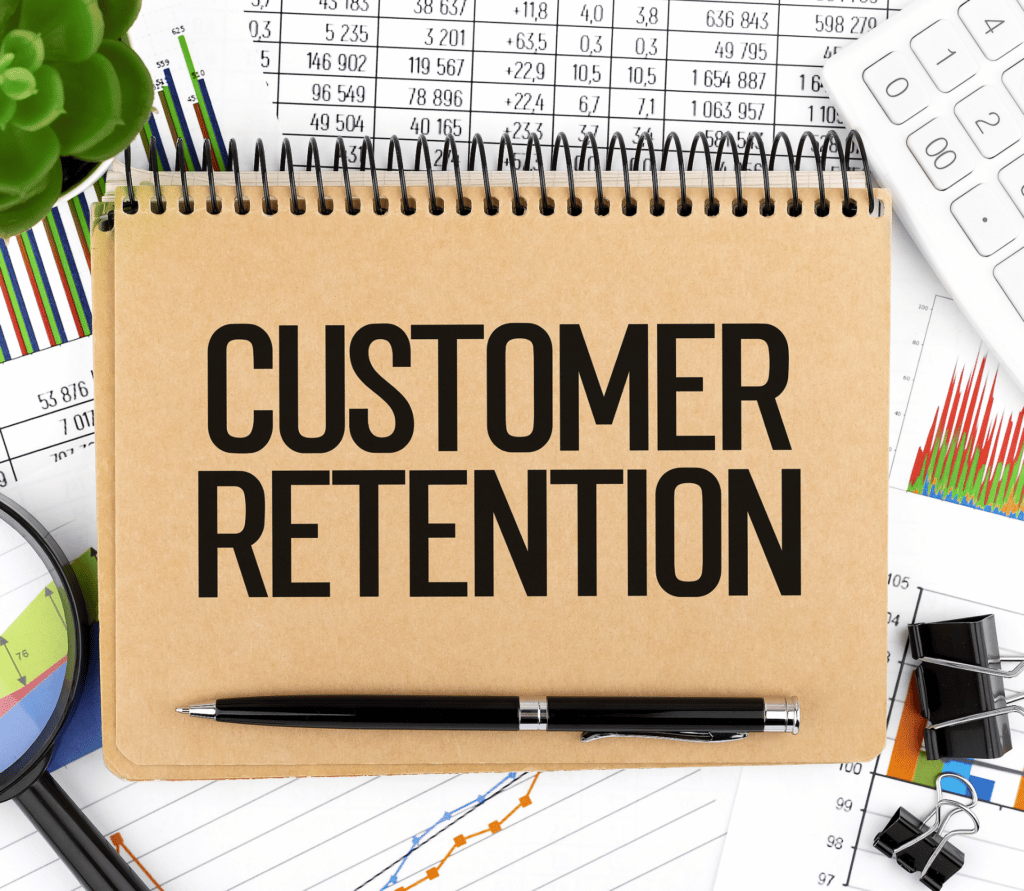
The Hidden Growth Engine – Retention as Acquisition
Ecommerce and online transactions are booming. Subscription opportunities are here: the market is reaching over $1.5 trillion USD in value by 2025. Seventy-five percent of businesses surveyed said they plan to go direct-to-consumer in a subscription model by 2023. Pre-pandemic, the average U.S. consumer spent about $233 a month in subscriptions. During the pandemic starting in early 2020, consumers spent significantly more.
Considering current macroeconomic situations moving into 2022, consumers have been demonstrating more frugality and mindfulness when it comes to spending. Could that be due to subscription fatigue? Maybe. More conscious consumerism? Definitely. However, despite the chatter about subscription fatigue, surveys are revealing that most consumers plan to pay for at least one more subscription in the next twelve months…if that subscription is considered essential and special.
What’s more important for driving growth in this marketplace: acquisition or retention?
In the past, the trend among subscription companies has been to look at the total number of subscribers, including how many subscribers joined their service or platform every day, every month, and every fiscal quarter. Subscriber acquisition is a major driver for subscription companies, but it is also a major cost. The cost of acquiring (CAC) new subscribers range anywhere from $15 to $150, and that figure fluctuates depending on the subscription’s baseline price and subscriber lifetime value (CLTV). The longer a subscriber stays subscribed, the higher the CLTV is which lowers the overall cost of acquiring said subscriber (CAC).
Typically, companies acquire subscribers at a loss. To recoup customer acquisition costs, subscription companies focus on attracting new subscribers. However, new subscribers show a likelihood to churn when their experiences are not given the attention and dedication needed to produce a higher CTLV. Getting more and more subscribers is akin to a hamster running endlessly on a wheel that stays in place. The time, energy, and costs required to acquire a subscriber are too expensive when compared to the costs needed for a business to retain that subscriber and keep them happy. Retaining rather than acquiring subscribers is far more effective at driving down business spending and paving the way for long-term growth in this subscription landscape.

What does churn do to your subscription business?
Churn is the number of subscribers, or the amount of subscription revenue lost, in a single period. Churn can be calculated by looking at the number of subscribers a company has today versus the prior period. The goal in calculating churn is to identify the subscribers who have left, optimize processes and offerings, and reduce churn. This varies between subscription companies and membership-based companies. Subscription companies typically keep subscribers until they cancel.
Membership-based companies, on the other hand, usually require their members to actively choose to remain members through a renewal process. Subscription companies need to address these two following types of churn, and they can start by tracking active (voluntary) churn and passive (involuntary) churn separately.
Two types of churn (they hurt your business but are avoidable with the right software solution):
- Active/Voluntary Churn
- Scenario: Roy logs into his subscription streaming service and actively cancels the subscription due to unknown reasons
- Passive/Involuntary Churn
- Scenario: Roy uses his subscription often. One day he logs into his account and finds out that his subscription was cancelled for reasons he has no clue about. He is devastated that he lost the connection and maybe his data on the platform is also lost.

Voluntary Churn
Voluntary churn is about reinforcing the value subscription companies deliver to their subscribers. Companies can use data to predict voluntary churn. For example, recently, Netflix started sending push notifications and email recommendations to subscribers. “You finished watching Show A. How about this show?” or “Here are the top 10 shows in your city.” Netflix can track who opens those email recommendations or clicks on push notifications and if their subscribers engage with their recommendations. If subscribers are engaging, the company probably has the right recommendation engine and the right engagement, and those subscribers are more likely to stay with a subscription company longer.
However, if subscribers are not engaging with the recommendations and not using the platform, the problem may be greater than the recommendation engine, which always needs tweaking. These subscribers are at risk of churning. To identify the problem, companies can look at these two cohorts of subscribers – those who engage versus those who don’t – and do AB or AZ testing with the recommendation engine, and subscriber engagement and behavior on the platform. Companies are constantly marketing to the customer and reinforcing brand value and increasing the perceived value to every single consumer.
Another consideration to reduce voluntary churn is to examine what value subscription companies bring to their subscribers that is different than the original reason the customer subscribed for. For example, a streaming subscriber may have signed up for Disney+ because they wanted to see an exclusive series only available on that direct-to-consumer streaming service. After they’ve watched that series, why will they stay?
The same is true of subscription boxes, news subscriptions, and other types of services. Subscribers signed up because the company offered them X. What happens when they’ve used, watched, or read X? Is there a reason for those subscribers to stay? Companies need to be sure they are continually offering value to keep their subscribers engaged enough to experience additional perceived value.
Involuntary Churn
Passive, or involuntary, churn occurs when a subscriber or member never intended to opt out of a subscription service. They wanted to renew, but when they logged into their newspaper subscription, streaming service, or subscription box, they found out their subscription had expired. It may have happened because a credit card expired and wasn’t updated in time, or the subscriber didn’t read a subscription company’s administrative emails to confirm or update a subscription.
Regardless of the reason for the involuntary churn, this creates a negative user experience for the subscriber which is a challenge for subscription companies. This is particularly true if the subscriber lost viewing history, user preferences, items stored in the cloud for SaaS services, or lost other important information they wanted to save.
In addition, when involuntary churn occurs, subscribers must make another buying decision. Do they want to log back in to update the information, or maybe it isn’t worth the hassle because they are only occasional users of a particular subscription service or membership? This creates friction and, when this occurs, companies will slowly lose subscribers for all the wrong reasons.
Some never wanted to leave, but maybe they’re mad the company “forced” them out unintentionally. Other customers simply don’t want to make the buying decision again. Companies need to ask themselves if they want to put their subscribers through negative experiences when they could potentially keep the business by implementing retention processes that don’t require an interaction with the subscriber.
So why does involuntary churn happen? It occurs because a company’s back-office systems aren’t as perfectly aligned as they need to be. In the subscription business, companies are 100% reliant on card-not-present transactions, but statistics show that 24% of card-not-present transactions fail. If subscription companies don’t have tools to optimize the handling of card-not-present transactions, they run the risk of losing 24% of their subscriber base every single day.

Get ahead of the game: unique strategies for preventing involuntary churn
Successfully managing involuntary churn starts with acknowledging each subscriber and their lifetime value. It isn’t just one payment lost for one month. It is the value of that subscriber over time. For example, if a subscriber passively churned and their monthly subscription fee is $15, the subscription company’s loss isn’t just $15. It is $15 x 24 months (or the average lifetime value of a subscriber for that company). Even very small percentage improvements in churn have a compounded interest effect on a subscription company’s bottom line.
Take action to lower your passive churn.
- Use a tool like account updater that automatically updates credit card information, so companies don’t have to reach out to their customers. The customer doesn’t have to do anything additional or have another decision to make. (Note: Some billing systems have this functionality, but they aren’t perfect.)
- Minimize outreach to customers because the delay in payments costs companies money as does the outreach (e.g., emails, calls, etc.). Before reaching out to customers, consider talking to Vindicia or a competitor to see what they can do to reduce involuntary churn.
- Maximize in-house retention efforts and layer your strategy with your vendor. A lot of in-house logic will be successful, like retrying the payment later.
- Work with software vendor Vindicia, who provides comprehensive retention solutions to ensure your MRR (monthly recurring revenue) stays optimized and keeps growing. With Vindicia Retain, subscription merchants tell Vindicia what they’ve done in-house that didn’t work. Then Vindicia works on those payment methods to optimize the payment acceptance level before outreach to subscribers is needed. Forrester Research studied Vindicia’s technology and found that Vindicia Retain produces 522% ROI for subscription-based businesses.
- Ensure that company partners truly understand recurring transactions. What triggers the logic of a retry? Who’s driving the decision for retries? What is being passed through to processors through company partners?
- Set up detailed reporting that explains why a payment failed, what type of card it was, when the payment was tried and retried, etc. In some cases, card issuers cannot identify the reason for payment failures, but subscription companies should gather whatever information they have to make future retention decisions.
- Revisit what payment methods to accept. Some are riskier than others, like gift cards or prepaid debit or credit cards. Companies may want to accept those cards, and later, proactively invite those subscribers to stay longer. Using data, find the right time where the customer has used the subscription service successfully.
- Allow multiple payment methods including Apple Pay, Google Pay, Amazon Pay, Samsung Pay and PayPal which give flexibility and an additional perceived layer of security.
- For companies whose customer demographic may live paycheck to paycheck, schedule retries to the 15th and the 30th with additional retries after the 15th and 30th. Try other dates like the 2nd, 3rd or 4th, or the first Friday of the month. If everyone in the industry uses the same dates, there may be additional failures on the retries.
- Be conscious of fraud filters that banking networks may be implementing for everyone’s protection. It can contribute to failed payments.
- For subscription companies that ship physical goods, obtain payment before the goods are shipped to extend the grace period.

Create a deeper relationship with each subscriber
Subscriptions are powerful because humans are creatures of habit. When we like certain things, whether they are groceries delivered to our doorstep, beauty boxes, or favorite streaming services, we will return to them again and again. This gives subscription and membership companies the opportunity to create deeper, emotional relationships with their subscribers and members. By consistently delivering subscription products and services to customers, subscription companies are constantly reinforcing their brand value and the benefit of the subscription model while helping customers avoid “decision fatigue,” by having to continually make decisions about what to buy each month.

Segmentation improves retention
Segmentation is a great tool to help subscription and membership companies retain their subscribers, determine which ones they want to keep and which ones they don’t. Examples of segments that companies can use to view their customers through different lenses include:
- By payment type (e.g., flag people at risk for churning because they paid with a gift card)
- By product or service utilization (e.g., which subscribers are logging into and using a product, service, website, or app)
- By acquisition channel (e.g., search engine marketing subscriber, referrals, etc.). Calculate the value and cost of each subscriber based on how they were acquired and develop your marketing spend accordingly.
- By service needs (e.g., How much does the customer use the service center? How often does the customer complain? How many credits do you have to issue to satisfy the customer? How many of these activities are required for these customers? Optimize your acquisition costs for each subset or cohort. High maintenance subscribers may cost you more money than you make. Do you keep this subscriber because they are a strategic person with brand influence or let them go to a competitor?)
Make business decisions based on the data by segment or cohort (e.g., June campaign versus July campaign; those who joined via free trial or joined directly; annual plan versus monthly). Use the data to identify insights into the lifetime value – and cost – of each cohort and subset of customers.

Who should take ownership of retention efforts?
At different subscription companies, retention is “owned” by different departments. Sometimes it is the marketing team or finance team. Other times it is the technology or executive teams. Successful teams need one focal point or person, but beyond that person, it is a cross-functional team. It is a multidisciplinary aspect of the subscription business.
As companies go down the retention path, and they start measuring voluntary versus involuntary churn, they split responsibilities. Voluntary churn sometimes resides with marketing to make sure there is sufficient support and communication and that the offering is good. Involuntary churn often resides with the payments team.
Retention is going to become more challenging. A lot of companies like Netflix are hitting a wall in terms of their ability to grow. When this happens, how do they pivot and have sufficient retention tools and strategies in-house to maintain? The level of subscription saturation will probably show up in the next two to three years, depending on macroeconomic activity or change in direction. If we have a recession, that saturation level could occur sooner.

Book a demo with Vindicia

When companies start measuring retention, breaking it down into reasons for churn and understanding the lifetime value and cohorts, they can proactively manage retention so much better and not be in a situation where they must make a “hard pivot.” Book a demo to see what Vindicia’s retention technology can do for your subscription business!




